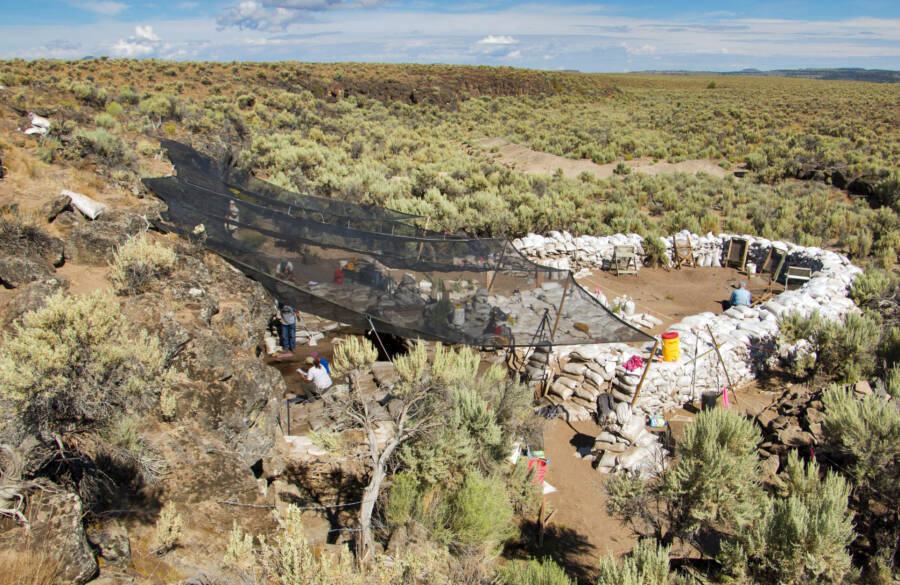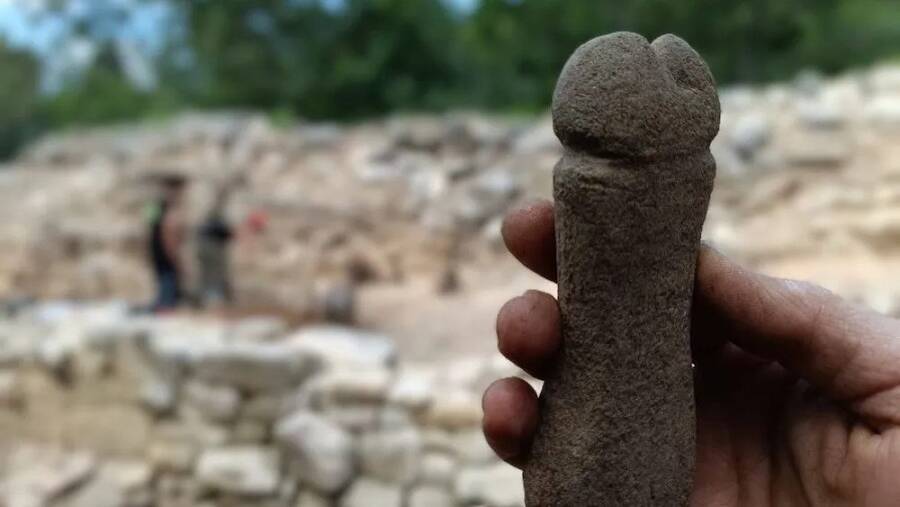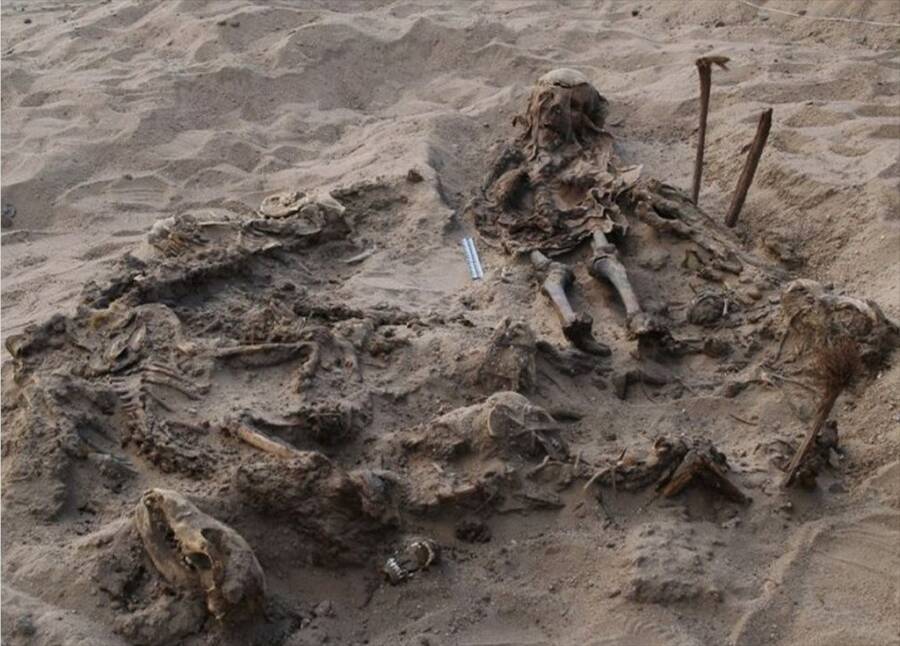Why A Rockshelter In Oregon Could Be The Site Of The Oldest Human Settlement In North America
The Rimrock Draw Rockshelter in Oregon has long been a place of interest to archaeologists. But it might be even more significant than previously thought, as radiocarbon dating of some objects found at the site suggests that humans lived there some 18,000 years ago. That would make it the oldest human settlement in North America.

University of OregonResearchers believe that this site may be the oldest human settlement in North America.
To determine the date of human settlement at the Rimrock Draw Rockshelter, researchers examined a number of objects discovered there, including a stone scraper with traces of bison blood and pieces of camel teeth. Radiocarbon dating suggests that these objects are 18,250 years old.
That would make the Rimrock Draw Rockshelter older than other known human settlements, including the Meadowcroft Rockshelter in Pennsylvania and the Cooper’s Ferry site in Idaho, both thought to be approximately 16,000 years old.
The Discovery Of A Stone Phallus That May Have Been Used To Sharpen Swords
While excavating the ruins of the Tower of Meira, a Spanish fortress that was destroyed in 1476, archaeologists came across a stone phallus. Intriguingly, they believe that it was used to sharpen swords during a series of violent peasant uprisings known as the Irmandiño revolts.

Arbore ArqueoloxíaFar from being a vulgar symbol, a phallic object like this was probably seen as protection against evil.
Though sharpening stones like this are fairly common, the phallic shape of this stone makes it more of an unusual find. That said, phallic imagery can be found throughout human history. Far from being vulgar, phallic objects have often been used as totems to protect from evil.
In this case, archaeologists suspect that there is a second, deeper meaning to the phallic stone, as it was found in the destroyed tower, apparently used during a revolt against a feudal lord.
The Mysterious Discovery Of An Ancient Egyptian Child Buried With 142 Dogs
Archaeologists were excavating a necropolis at the Faiyum Oasis, west of the Nile River in Egypt, when they came across a head-scratching find: the remains of an eight- or nine-year-old child laid atop the bodies of 142 dogs, most of which were puppies.

Centre for Egyptological Research of the Russian Academy of Sciences
The child was also found with a linen bag over their head, adding to the mystery.
Researchers believe that the burial dates to the first century B.C.E. and the first century C.E., but otherwise, they aren’t exactly sure what it signifies. The burial is atypical for Egypt, and researchers speculated that the dogs could represent “religious and magical ideas” that emerged as Egyptians and foreigners interacted.
Since the dogs’ remains also had traces of blue clay, it’s possible that the animals were killed during a catastrophic flood. Researchers speculated that perhaps the child was caring for the dogs at the time and was thus buried alongside them.





